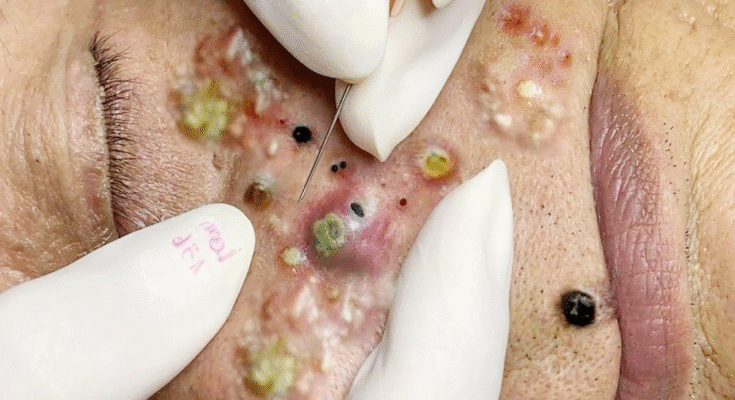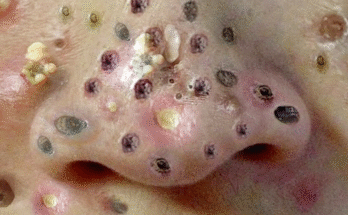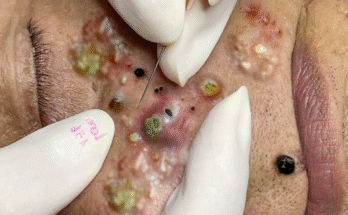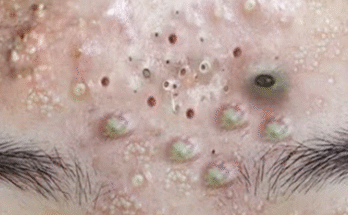Acne can be one of the most frustrating skin concerns — it’s visible, persistent, and emotionally taxing. Whether you’re battling breakouts as a teen or facing adult acne later in life, the right skincare ingredients can make all the difference between ongoing flare-ups and clearer, calmer skin.
But with so many products on the market — serums, spot treatments, cleansers, and toners all claiming to “fight acne” — how do you know which ingredients actually work?
This comprehensive guide takes a deep dive into the science of acne-fighting ingredients, explaining what they do, how they work, who they’re best for, and how to build a skincare routine that really targets acne — without damaging your skin barrier.
1. Understanding Acne: Why Ingredients Matter
Before diving into the ingredients themselves, it’s essential to understand what causes acne — because every acne-fighting ingredient works by addressing a specific part of the problem.
1.1 The Four Main Causes of Acne
Acne is the result of a complex process that involves four primary factors:
-
Excess Sebum Production:
Overactive oil glands clog pores and create a breeding ground for bacteria. -
Clogged Pores (Keratinization):
Dead skin cells stick together and block hair follicles. -
Bacterial Overgrowth:
Cutibacterium acnes (formerly Propionibacterium acnes) feeds on sebum and triggers inflammation. -
Inflammation:
The immune system reacts to bacteria and blockages, leading to red, swollen, painful pimples.
Each acne-fighting ingredient targets one or more of these root causes — that’s why understanding how they function helps you choose products strategically instead of blindly trying new formulas.
2. The Core Acne-Fighting Ingredients: What Science Supports
Let’s break down the most proven, dermatologist-approved ingredients for acne-prone skin.
2.1 Salicylic Acid (Beta Hydroxy Acid – BHA)
What it is:
A lipid-soluble exfoliant derived from willow bark, known for its ability to penetrate deep into pores.
How it works:
-
Unclogs pores by dissolving oil and dead cells inside the follicle.
-
Reduces inflammation due to its anti-inflammatory properties (related to aspirin).
-
Prevents blackheads and whiteheads from forming.
Best for:
-
Oily and combination skin types
-
Blackheads and comedonal acne
How to use:
-
Found in cleansers (0.5–2%), toners, or serums.
-
Use 2–3 times a week if sensitive; daily if tolerated.
Pro Tip:
Pair with niacinamide to minimize irritation and strengthen your skin barrier.
2.2 Benzoyl Peroxide
What it is:
An antibacterial and keratolytic ingredient that’s been a cornerstone of acne treatment for decades.
How it works:
-
Kills acne-causing bacteria (C. acnes) without inducing resistance.
-
Unclogs pores by removing excess oil and dead skin.
-
Reduces redness and inflammation.
Best for:
-
Inflammatory acne (pustules and papules)
-
Moderate to severe breakouts
How to use:
-
Start with 2.5% or 5% concentrations.
-
Apply as a spot treatment or wash-off product to avoid irritation.
Warnings:
-
Can bleach fabrics (towels, pillowcases).
-
May cause dryness — always follow with a non-comedogenic moisturizer.
Pro Tip:
Alternate benzoyl peroxide and retinoids (use benzoyl peroxide in the morning, retinoid at night) to avoid chemical deactivation and irritation.
2.3 Retinoids (Vitamin A Derivatives)
What they are:
A class of compounds derived from vitamin A — includes retinol, adapalene, tretinoin, and tazarotene.
How they work:
-
Increase cell turnover, helping unclog pores.
-
Prevent comedones by normalizing keratinization.
-
Stimulate collagen production, improving acne scars over time.
-
Reduce inflammation and even out pigmentation.
Best for:
-
Comedonal and inflammatory acne
-
Acne scars and uneven texture
How to use:
-
Start with adapalene (Differin) 2–3 nights per week.
-
Gradually increase frequency as your skin builds tolerance.
Common side effects:
-
Peeling, dryness, purging (temporary).
-
Always pair with moisturizer and daily SPF.
Pro Tip:
Use the “sandwich method” — moisturizer, retinoid, then another thin layer of moisturizer — to reduce irritation.
2.4 Niacinamide (Vitamin B3)
What it is:
A multi-functional, soothing vitamin that supports barrier repair and reduces inflammation.
How it works:
-
Regulates sebum production.
-
Reduces redness and irritation.
-
Fades post-acne dark marks (PIH).
-
Strengthens the skin barrier.
Best for:
-
All skin types, especially sensitive and combination.
-
Red, irritated, or inflamed acne.
How to use:
-
Works well in serums (2–10%).
-
Pairs safely with almost all actives — including acids and retinoids.
Pro Tip:
Combine niacinamide + zinc for even stronger oil-regulating and calming benefits.
2.5 Azelaic Acid
What it is:
A dicarboxylic acid derived from grains, with antibacterial and skin-brightening properties.
How it works:
-
Kills acne bacteria while being gentle on the skin.
-
Reduces pigmentation by inhibiting tyrosinase (melanin enzyme).
-
Calms inflammation — great for rosacea-prone skin.
Best for:
-
Mild to moderate acne
-
Sensitive skin, redness, rosacea
-
Post-acne dark marks
How to use:
-
Start with 10% (OTC); dermatologists may prescribe 15–20%.
-
Apply daily as a serum or cream.
Pro Tip:
Use azelaic acid in the morning with sunscreen — it boosts brightness and evenness throughout the day.
2.6 Alpha Hydroxy Acids (AHAs)
What they are:
Water-soluble exfoliating acids that remove surface dead skin cells.
Common types:
-
Glycolic acid – strong exfoliant for texture and scars.
-
Lactic acid – milder, hydrating, and gentle.
-
Mandelic acid – best for sensitive or darker skin types.
How they work:
-
Exfoliate surface skin, improving texture and radiance.
-
Fade acne marks and mild pigmentation.
-
Increase product absorption and stimulate collagen.
Best for:
-
Dry, dull, or aging acne-prone skin
-
Post-acne scars and uneven tone
How to use:
-
Start with 5–10% concentrations, 1–2 times a week.
-
Always use SPF after AHAs — they make skin more sun-sensitive.
Pro Tip:
Use AHA exfoliation at night and follow with hydrating products like hyaluronic acid to minimize irritation.
2.7 Sulfur
What it is:
A natural mineral with antibacterial and keratolytic properties, used for centuries in dermatology.
How it works:
-
Absorbs excess oil.
-
Kills acne bacteria.
-
Unclogs pores and dries out active pimples.
Best for:
-
Oily, congested skin
-
Occasional breakouts
-
Combination skin
How to use:
-
Found in masks, spot treatments, and cleansers (2–10%).
-
Use once or twice a week to avoid over-drying.
Pro Tip:
Sulfur has a strong odor — look for modern formulations that neutralize the smell without reducing effectiveness.
2.8 Zinc
What it is:
A mineral that regulates sebum and reduces inflammation.
How it works:
-
Controls oil production.
-
Calms irritated skin.
-
Has antibacterial effects.
Best for:
-
Hormonal acne
-
Red, inflamed breakouts
How to use:
-
Topically as zinc PCA (common in serums and toners).
-
Orally in supplements (under doctor guidance).
Pro Tip:
Pair zinc with niacinamide — they work synergistically to soothe inflammation and regulate oil.
2.9 Tea Tree Oil
What it is:
A natural antibacterial essential oil derived from the Melaleuca alternifolia plant.
How it works:
-
Kills acne-causing bacteria.
-
Reduces inflammation.
-
Dries out active blemishes.
Best for:
-
Mild acne
-
Those who prefer natural alternatives
How to use:
-
Use diluted formulations (5% or less).
-
Spot treat only; never apply pure oil directly to skin.
Pro Tip:
Combine with aloe vera or niacinamide to soothe and minimize irritation.
2.10 Clay and Charcoal
What they are:
Absorbent ingredients that detoxify and draw out impurities.
How they work:
-
Absorb oil and debris.
-
Decongest pores.
-
Reduce surface shine.
Best for:
-
Oily and congested skin
-
Blackheads and enlarged pores
How to use:
-
Clay masks (kaolin, bentonite) once or twice weekly.
-
Avoid overuse — too much drying leads to rebound oil production.
3. Hormonal and Inflammatory Acne: Additional Active Ingredients
When acne is driven by hormones or inflammation, supportive actives can complement standard treatments.
3.1 Retinaldehyde (a gentler retinoid)
-
Converts to retinoic acid in the skin with less irritation.
-
Great for sensitive or mature acne-prone skin.
3.2 Tranexamic Acid
-
Targets pigmentation from post-acne marks.
-
Reduces redness and discoloration.
3.3 Centella Asiatica (Cica)
-
Calms inflammation and supports healing.
-
Excellent in calming serums and barrier repair creams.
3.4 Green Tea Extract
-
Contains EGCG, a powerful antioxidant.
-
Reduces sebum production and soothes irritation.
3.5 Probiotics and Prebiotics
-
Strengthen the skin microbiome.
-
Prevent acne-causing bacteria from dominating the skin ecosystem.
4. Building an Acne-Fighting Skincare Routine
Consistency matters more than using every trending ingredient. Here’s how to build an effective routine using powerhouse actives safely.
4.1 Morning Routine
| Step | Product Type | Recommended Ingredients |
|---|---|---|
| 1 | Cleanser | Salicylic acid or gentle gel cleanser |
| 2 | Toner/Essence | Niacinamide, zinc, or green tea |
| 3 | Serum | Vitamin C, azelaic acid, or niacinamide |
| 4 | Moisturizer | Ceramides, panthenol, or centella |
| 5 | Sunscreen | Broad-spectrum SPF 30+ (non-comedogenic) |
4.2 Night Routine
| Step | Product Type | Recommended Ingredients |
|---|---|---|
| 1 | Cleanser | Gentle foaming cleanser or micellar water |
| 2 | Exfoliant (2–3x per week) | AHA/BHA |
| 3 | Treatment | Retinoid, azelaic acid, or benzoyl peroxide |
| 4 | Moisturizer | Barrier-supportive ingredients (ceramides, hyaluronic acid) |
4.3 Weekly Add-Ons
-
Clay Mask: Once a week to absorb oil.
-
Chemical Peel: Monthly (professional).
-
LED Light Therapy: Red light (anti-inflammatory) or blue light (antibacterial).
5. Ingredient Pairing: What Works (and What Doesn’t)
Some ingredients complement each other beautifully — others can cause irritation or cancel each other out.
✅ Effective Pairings
-
Niacinamide + Salicylic Acid: Soothes and unclogs.
-
Retinoid + Niacinamide: Enhances tolerance and results.
-
Vitamin C + Sunscreen: Boosts UV protection.
-
Azelaic Acid + Niacinamide: Brightens and calms.
⚠️ Avoid Mixing
-
Retinoids + AHAs/BHAs (same routine): Too irritating — alternate nights.
-
Benzoyl Peroxide + Retinol (same step): Can oxidize retinoid; use at different times of day.
-
Multiple exfoliants: Over-exfoliation damages the barrier.
6. Supporting Ingredients for Barrier Repair
Even the most powerful acne actives can cause dryness or irritation. To balance your skin, include nourishing and barrier-restoring ingredients:
-
Ceramides – Restore the lipid barrier.
-
Hyaluronic Acid – Hydrates and plumps.
-
Panthenol (Vitamin B5) – Soothes and repairs.
-
Allantoin – Reduces sensitivity.
-
Squalane – Lightweight oil for hydration without clogging pores.
These ingredients ensure your acne treatments work with your skin, not against it.
7. Common Mistakes When Using Acne Ingredients
-
Using too many actives at once — leads to irritation and rebound breakouts.
-
Skipping moisturizer — dryness signals more oil production.
-
Ignoring sunscreen — UV exposure worsens pigmentation and slows healing.
-
Not giving products enough time — acne treatments need at least 8–12 weeks for visible improvement.
-
Over-cleansing or over-exfoliating — weakens the barrier, causing inflammation.
8. Natural vs. Synthetic Ingredients: What Matters Most
Both can be effective — what’s crucial is formulation quality, not whether the ingredient is natural or lab-made.
-
Natural actives like tea tree oil or green tea are gentle but slower.
-
Synthetic actives like retinoids or benzoyl peroxide work faster but may require careful use.
-
Hybrid routines often deliver the best balance — science meets soothing botanicals.
9. When to See a Dermatologist
If you’ve used acne-fighting ingredients consistently for 3–4 months with minimal improvement, consult a dermatologist. You may need:
-
Prescription-strength retinoids (tretinoin)
-
Oral antibiotics or anti-androgen therapy
-
Professional procedures (chemical peels, lasers, microneedling)
10. The Path to Clear Skin: Patience, Consistency, and Knowledge
Clear skin isn’t about using the most expensive serum or harshest acid — it’s about understanding what your skin needs, introducing ingredients gradually, and maintaining balance.
A well-formulated routine with proven actives like salicylic acid, benzoyl peroxide, retinoids, niacinamide, and azelaic acid can transform your skin — not overnight, but sustainably.
Be patient with the process, protect your barrier, and trust the science. Every small improvement adds up.
Final Thought
Acne-fighting skincare is both art and science. The best results come from consistency, not chaos. Stick to evidence-backed ingredients, respect your skin’s limits, and celebrate your progress — because healthy, clear skin isn’t about perfection, it’s about care and understanding.



